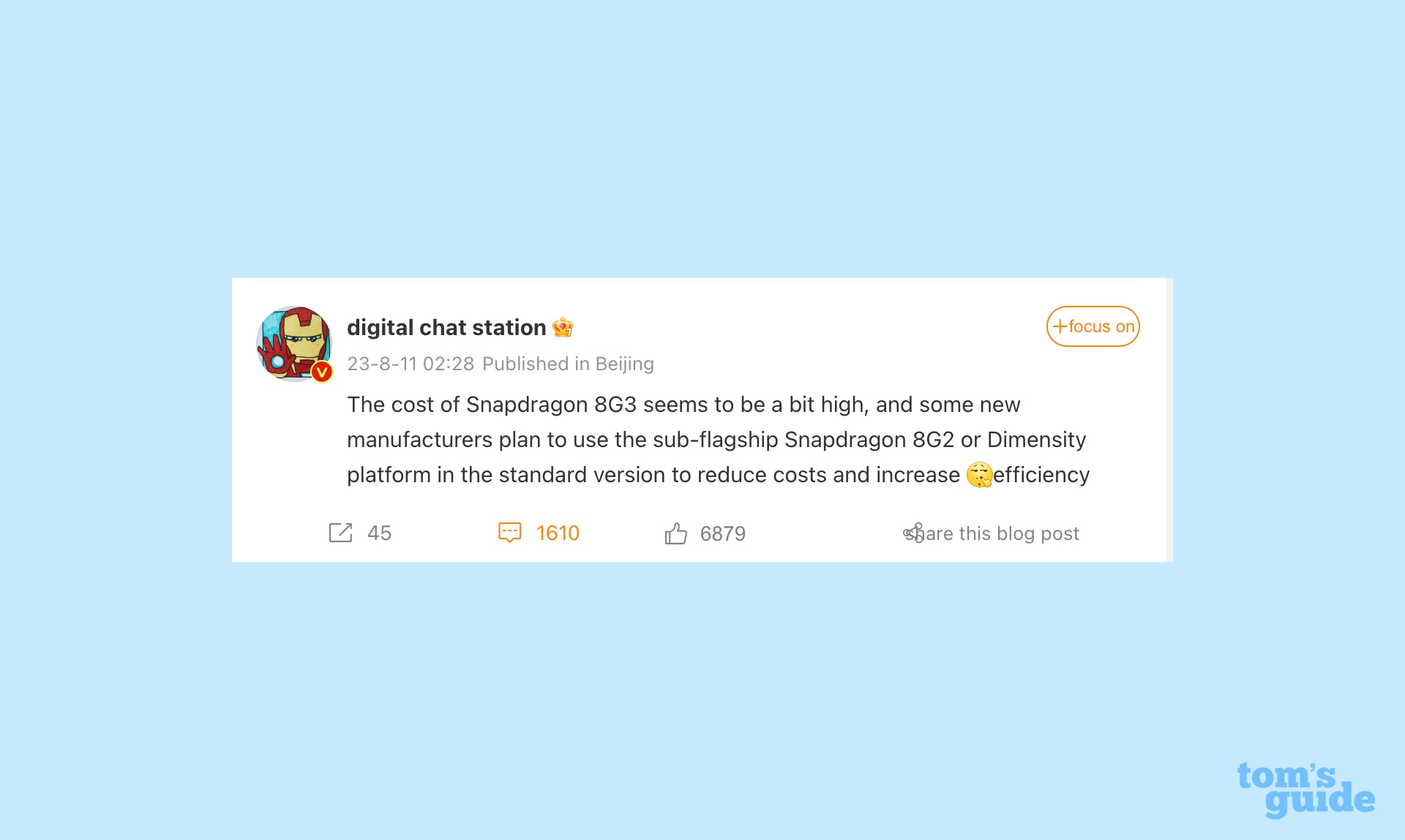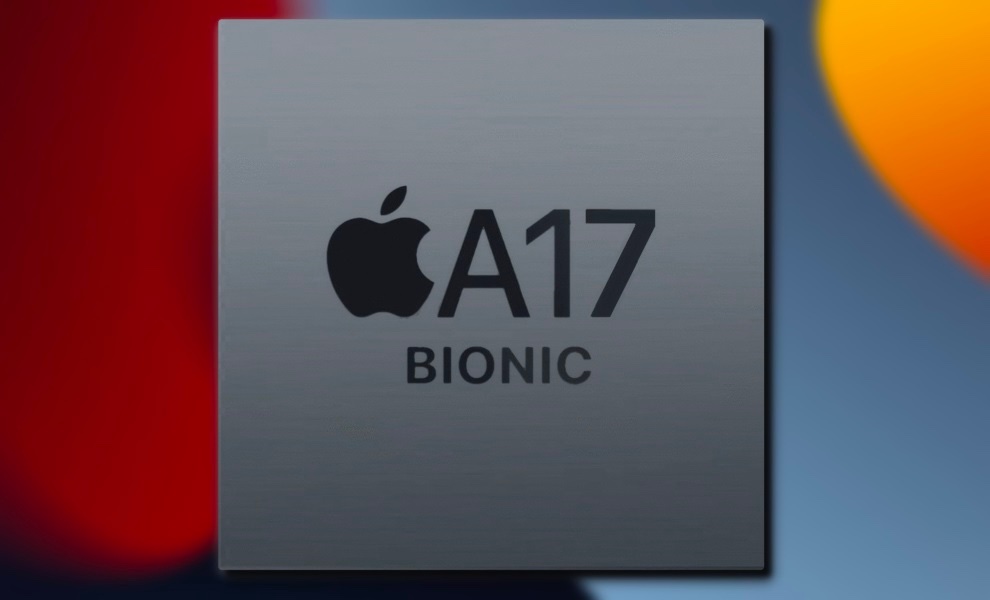Snapdragon 8 Gen 3 could miss some Android flagships — and that’s great news for iPhone 15
Some 2024 phones may turn to Snapdragon 8 Gen 2 or Dimensity

Next year's batch of leading Android phones may perform a lot like this year's models. And the rising cost of silicon could be the reason why.
You'd imagine many of 2024's best phones to run on the Snapdragon 8 Gen 3, the yet-to-be-announced update to Qualcomm's top-of-the-line system-on-chip for mobile devices. However, a rumor coming out of China claims the cost of upgrading to the latest Snapdragon chipset may be too high for some phone makers.
Posting on Weibo, someone named Digital Chat Station claims the Snapdragon 8 Gen 3's cost "seems to be a bit high," according to a Chinese-to-English translation of the post. That could mean some phones either use MediaTek's Dimensity chipset or keep the existing Snapdragon 8 Gen 2 found in many of this year's best Android phones.

That doesn't necessarily mean that the Snapdragon 8 Gen 3 won't be found in some phones. In its report on the Weibo post, Android Authority speculates that the newer chip could appear in some phone makers' Ultra, Pro and Plus variations. Entry-level flagships may left to use different chipsets as a way of keeping costs down on those phones.
The Snapdragon 8 Gen 2 is good...
If this claim is true, that would be a disappointment, though not because of anything the Snapdragon 8 Gen 2 does wrong. On the contrary, it's been one of the best additions to Android flagships this year, yielding both high performance and improved power efficiency.
On the performance front, the Snapdragon 8 Gen 2 has come the closest of any Android silicon in recent years of matching the performance of Apple's best-in-class mobile silicon. While the A16 Bionic that powers the iPhone 14 Pro models produces better results on the Geekbench benchmark measuring general performance, the gap isn't as wide as it used to be. And in our benchmarks, Snapdragon 8 Gen 2-powered devices post better numbers than the iPhone 14 Pro on some graphics tests, like 3DMark's Wild Life Unlimited.
More importantly, devices powered by Snapdragon 8 Gen 2 chips have produced some pretty impressive results on our battery life tests. All three Galaxy S23 models outlasted their predecessors, with the Galaxy S23 Ultra landing on our best phone battery life list. The recently released Galaxy Z Fold 5 held out for 11 hours on our battery test — something no Samsung foldable had ever done before. The Snapdragon 8 Gen 2 is a big reason why.
Sign up to get the BEST of Tom's Guide direct to your inbox.
Get instant access to breaking news, the hottest reviews, great deals and helpful tips.
... But the A17 Bionic should be better
Given the gains delivered by the Snapdragon 8 Gen 2, we're eager to see whether the Snapdragon 8 Gen 3 will be able to keep up that momentum when it debuts later this year. Qualcomm usually shows off its new chips at the annual Snapdragon Summit, held in the latter part of the year, with the 2023 edition scheduled for October 24.

The stakes are especially high given that Apple is expected to introduce the A17 Bionic chipset as part of this year's iPhone 15 launch. The A17 Bionic is likely to power the new iPhone 15 Pro models, with the A16 Bionic slated for the standard iPhone 15 and iPhone 15 Plus.
The A17 Bionic could be a big step forward in its own right, as the chip is expected to be developed using a 3nm process — the first time that's happening with a mobile chip. Smaller chipsets means greater transistor density, and that translates to gains in both power and energy efficiency. One report claims the A17 Bionic will see a 35% improvement in power efficiency over the A16 Bionic, which uses a 4nm process.
Apple's advantage could be even bigger. A report from earlier this year claimed that Apple had locked up the supply for 3nm chips for the time being, meaning that next year's top Android phones will likely have to make do with silicon manufactured on a 4nm process. If true, Apple could widen its performance lead — and that's before we find out whether there will be more Android releases in 2024 turning to 2023 silicon instead of the newer Snapdragon 8 Gen 3.
More from Tom's Guide
Philip Michaels is a Managing Editor at Tom's Guide. He's been covering personal technology since 1999 and was in the building when Steve Jobs showed off the iPhone for the first time. He's been evaluating smartphones since that first iPhone debuted in 2007, and he's been following phone carriers and smartphone plans since 2015. He has strong opinions about Apple, the Oakland Athletics, old movies and proper butchery techniques. Follow him at @PhilipMichaels.

